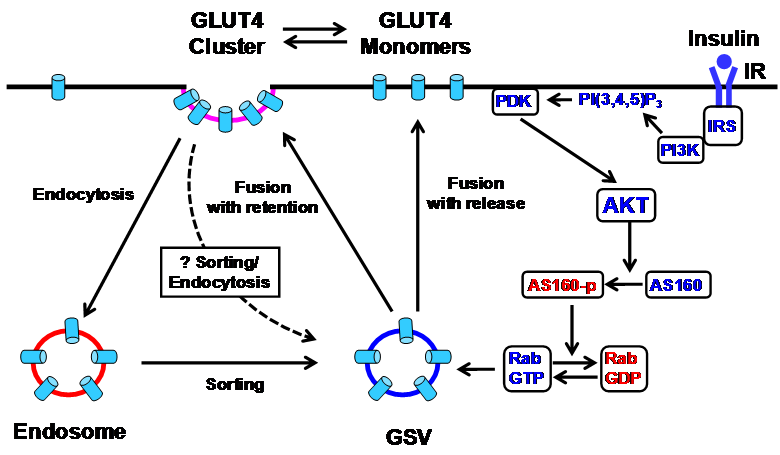
Insulin action also regulates amino acid uptake, protein synthesis, fatty acid uptake, fatty acid synthesis, and cholesterol synthesis through direct actions on the pathways that regulate these processes. While insulin regulates the assimilation and distribution of all nutrients, insulin action is generally quantified through changes in glucose homeostasis. Therefore, liver, adipose tissue, and skeletal muscle, each play a very important role in exogenous nutrient assimilation after a meal, and the redistribution of endogenous nutrients during fasting. In the fasted state, fatty acids and glycerol are released from adipose tissue, amino acids from skeletal muscle, and glucose from the liver. In the fed state, nutrients are being digested, absorbed and delivered to the body from the intestinal tract. The fasted state is defined as the period of time when the intestinal tract is no longer a significant source of nutrition. The actions of insulin on specific tissues vary depending both on the role that tissue plays in the assimilation of nutrients during the fed state, as well as the role that the tissue plays in the distribution of nutrients in the fasted state. The major physiologic action of insulin is to instruct tissues in the assimilation of dietary macronutrients and activate anabolic pathways that support growth and repair of tissues during the fed state. Understanding how insulin signaling alters the intracellular trafficking of GLUT4 as well as understanding the fate of glucose transported into the cell by GLUT4 will be critically important for seeking solutions to the current rise in diabetes and metabolic disease.


Regulation of GLUT4 has been a major focus of research on the cause and prevention of type 2 diabetes. GLUT4 has long been known to be an insulin responsive glucose transporter.


 0 kommentar(er)
0 kommentar(er)
